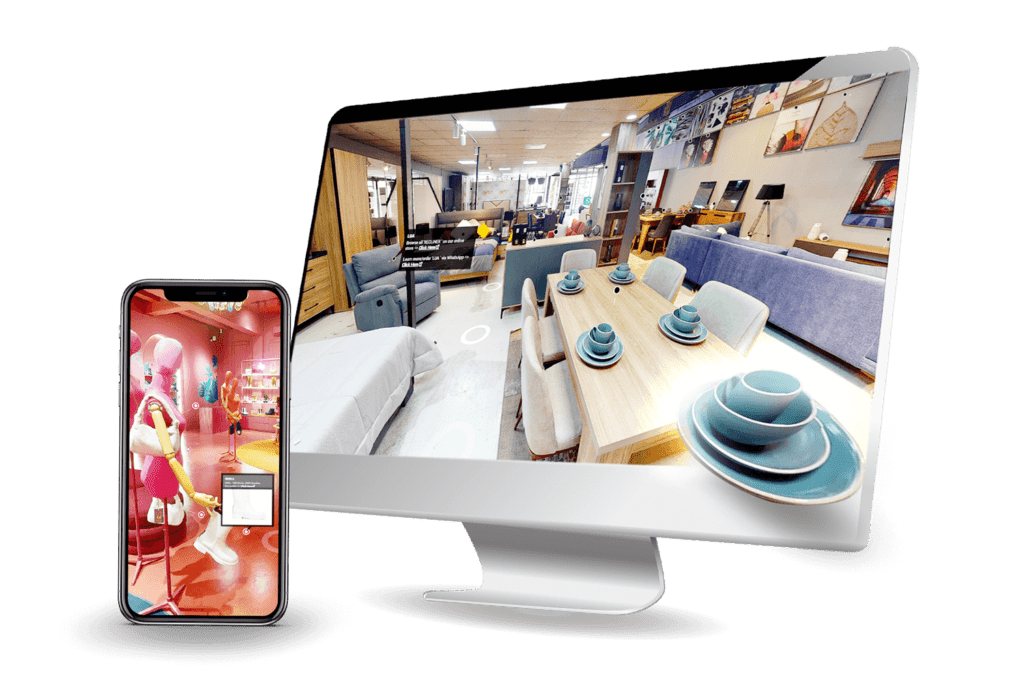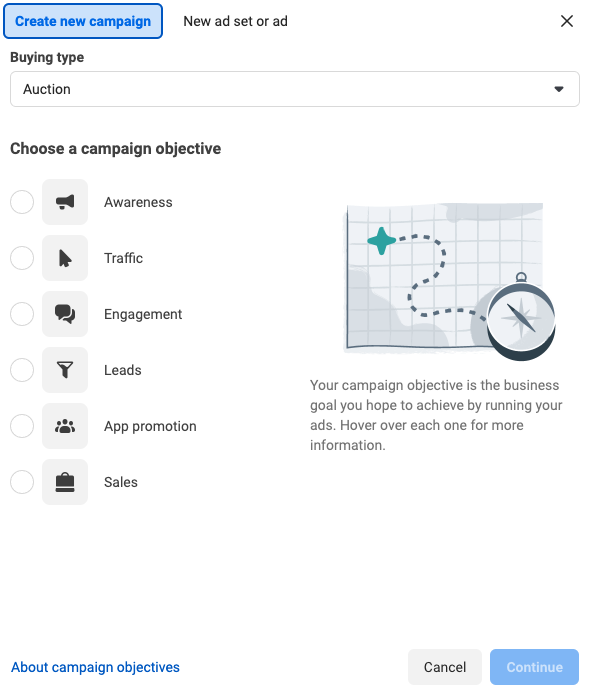In today’s digital age, businesses are constantly seeking innovative ways to captivate their audience and stand out from the competition. One of the most effective tools to achieve this is through 360 virtual tours. These immersive experiences allow potential customers to explore your space or products in a way that static images and traditional videos simply cannot match. This blog aims to provide you with expert strategies to master Meta Ads, utilizing them to effectively market your 360 virtual tours.
The Power of 360 Virtual Tours

360 virtual tours offer a unique and engaging way to showcase your business. Whether you’re a retail store, showroom, museum, hotel, restaurant, or exhibition, virtual tours can significantly enhance customer engagement and experience. By providing an interactive, immersive experience, you allow customers to explore every corner of your space, helping them make informed decisions and fostering a deeper connection with your brand.
Understanding Meta Ads for 360 Virtual Tours
A – What Are Meta Ads?
Meta Ads, encompassing both Facebook and Instagram advertising, are powerful tools in the digital marketing landscape. They allow businesses to create highly targeted ad campaigns that reach specific audiences based on demographics, interests, behaviours, and more. By leveraging Meta’s extensive user data, you can ensure your ads are seen by the people most likely to engage with your content and convert.
B – Why Use Meta Ads for Virtual Tours?
Meta Ads are particularly effective for promoting 360 virtual tours. The interactive nature of these tours aligns perfectly with the engaging formats available on Facebook and Instagram. Benefits include:
- Increased Reach: Tap into Meta’s vast user base to reach a global audience.
- Higher Engagement: Interactive and visually appealing ads are more likely to capture attention and drive engagement.
- Better Targeting: Use Meta’s sophisticated targeting options to reach your ideal audience.
- Measurable Results: Track performance metrics to measure the success of your campaigns and optimise accordingly.
Setting Up Your Meta Ad Campaign

A – Creating a Compelling Ad Strategy
Developing a successful Meta Ads campaign begins with a clear strategy. Follow these steps:
- Set Clear Objectives: Define what you want to achieve with your campaign. Objectives could include increasing brand awareness, driving traffic to your virtual tour, or generating leads.
- Identify Key Performance Indicators (KPIs): Determine the metrics you’ll use to measure success, such as click-through rates, engagement rates, and conversion rates.
- Develop a Content Calendar: Plan your ad content in advance to ensure a consistent and cohesive campaign.
B – Defining Your Target Audience
Identifying and segmenting your audience is crucial for effective ad targeting. Consider:
- Demographics: Age, gender, location, and income level.
- Interests: Hobbies, activities, and topics they engage with online.
- Behaviours: Purchasing behaviour, device usage, and online activity patterns.
Designing Effective Meta Ads
A – Crafting Engaging Ad Copy
Your ad copy should be captivating and informative. Tips include:
- Highlight Unique Features: Emphasise what makes your virtual tour special.
- Use Emotional Language: Connect with your audience on an emotional level.
- Keep it Concise: Ensure your message is clear and to the point.
B – Utilizing Visual Elements
High-quality visuals are essential for attracting attention. Best practices include:
- Use High-Resolution Images and Videos: Ensure your visuals are clear and professional.
- Showcase Key Areas: Highlight the most important aspects of your virtual tour.
- Include Interactive Elements: Where possible, use features like 360-degree photos and videos.
C – Incorporating Call-to-Actions (CTAs)
Effective CTAs drive engagement and clicks. Examples include:
- “Explore Now”: Encourages immediate interaction.
- “Book a Visit”: Drives conversions for physical visits.
- “Learn More”: Provides additional information and context.
Leveraging Different Meta Ad Formats

A – Carousel Ads
Carousel ads allow you to showcase multiple aspects of your virtual tour. Each card can feature a different part of your tour, creating a comprehensive and engaging story.
B – Video Ads
Video ads are perfect for creating immersive experiences. Use videos to highlight key areas of your virtual tour and provide a dynamic viewing experience.
C – Collection Ads
Collection ads combine videos and images to offer a holistic view of your virtual tour. This format is particularly effective for e-commerce, allowing users to browse products directly from the ad.
Advanced Targeting and Retargeting Strategies

A – Audience Segmentation
Segment your audience using demographic, geographic, and interest-based targeting. This ensures your ads are shown to the most relevant users.
B – Custom Audiences
Build custom audiences from your website visitors, customer lists, or app users. This allows you to re-engage people who have already shown interest in your business.
C – Lookalike Audiences
Expand your reach by targeting lookalike audiences. These are users who share characteristics with your existing customers, increasing the likelihood of engagement and conversion.
D – Retargeting Campaigns
Retargeting is key for re-engaging users who have interacted with your content before. Use retargeting to remind them of your virtual tour and encourage them to take the next step.
Optimizing Your Meta Ads

A – A/B Testing
Experiment with different ad elements to find what works best. Test variations of your visuals, ad copy, and CTAs to see which combinations perform the best.
B – Analyzing Ad Performance
Track key metrics such as click-through rates, conversion rates, and cost per conversion. Use this data to evaluate the effectiveness of your campaigns.
C – Adjusting Campaigns for Better Results
Based on your performance data, make adjustments to improve your ad campaigns. This could involve tweaking your targeting, refining your ad copy, or adjusting your budget.
Case Studies and Success Stories
A – Retail Stores
A retail store used Meta Ads to promote their 360 virtual tour of their summer collection. By targeting fashion enthusiasts and using high-quality visuals, they saw a significant increase in both online engagement and in-store visits. This success story highlights the power of immersive virtual tours combined with strategic Meta Ads to drive both digital and physical traffic.
B – Museums and Art Exhibitions
A museum leveraged Meta Ads to showcase their virtual tour of a new art exhibition. By targeting art lovers and using engaging video ads, they were able to attract a wider audience, including international visitors who might not have been able to visit in person. The campaign resulted in increased online ticket sales and heightened interest in the exhibition.
C – Showrooms and Offices
A furniture showroom created a 360 virtual tour to highlight their latest product line. Using carousel ads on Facebook, they were able to showcase multiple product angles and features. The ads targeted interior designers and home improvement enthusiasts, leading to higher engagement rates and increased sales inquiries.
D – Restaurants and Hospitality
A luxury hotel used Meta Ads to promote their virtual tour of the hotel’s amenities and rooms. By targeting frequent travelers and individuals interested in luxury stays, the hotel saw an uptick in online bookings. The immersive virtual tour allowed potential guests to experience the hotel’s ambiance and facilities, increasing their likelihood of booking a stay.
Tools and Resources
A – Recommended Tools for Creating 360 Virtual Tours
- Software: Platforms like Matterport, Kuula, and 3DVista offer robust tools for creating high-quality 360 virtual tours.
- Equipment: Invest in a good 360-degree camera, such as the Ricoh Theta or Insta360, to capture professional-grade visuals.
- Editing Tools: Use software like Adobe Premiere Pro or Final Cut Pro for editing your virtual tour videos.
B – Meta Ads Resources
- Facebook Blueprint: Free courses and certifications on how to use Meta Ads effectively.
- Meta Business Help Center: Detailed guides and tutorials on setting up and managing your ads.
- Ad Library: A resource to view active ads from various brands, helping you draw inspiration for your campaigns.
Conclusion
Recap of Key Points
To master Meta Ads for your 360 virtual tours, focus on creating a compelling ad strategy, designing engaging ads, leveraging advanced targeting options, and continuously optimizing your campaigns. By understanding your audience and using the right tools, you can significantly enhance your digital marketing efforts.
Future Trends
As technology evolves, the future of 360 virtual tours and Meta Ads will likely see even more integration of augmented reality (AR) and virtual reality (VR). These advancements will provide even more immersive experiences for users, further blurring the lines between physical and digital spaces.
Ready to elevate your marketing strategy with 360 virtual tours and Meta Ads? Contact us at oVRworldwide for expert assistance in creating and promoting your 360 virtual tours. Let’s transform your business with cutting-edge digital marketing techniques.

